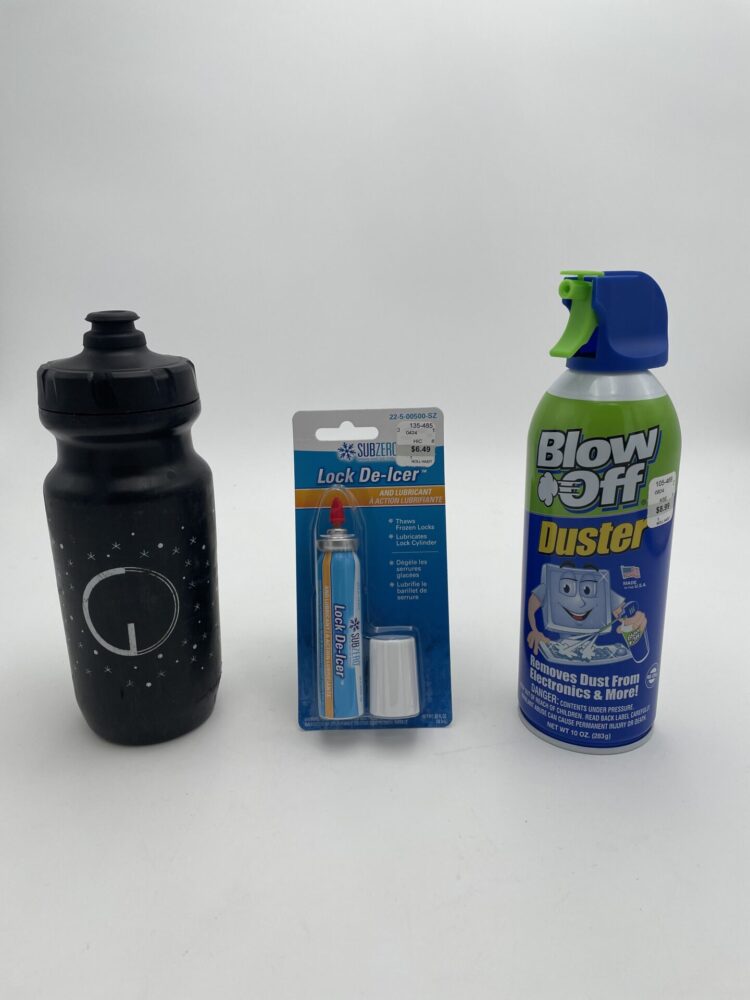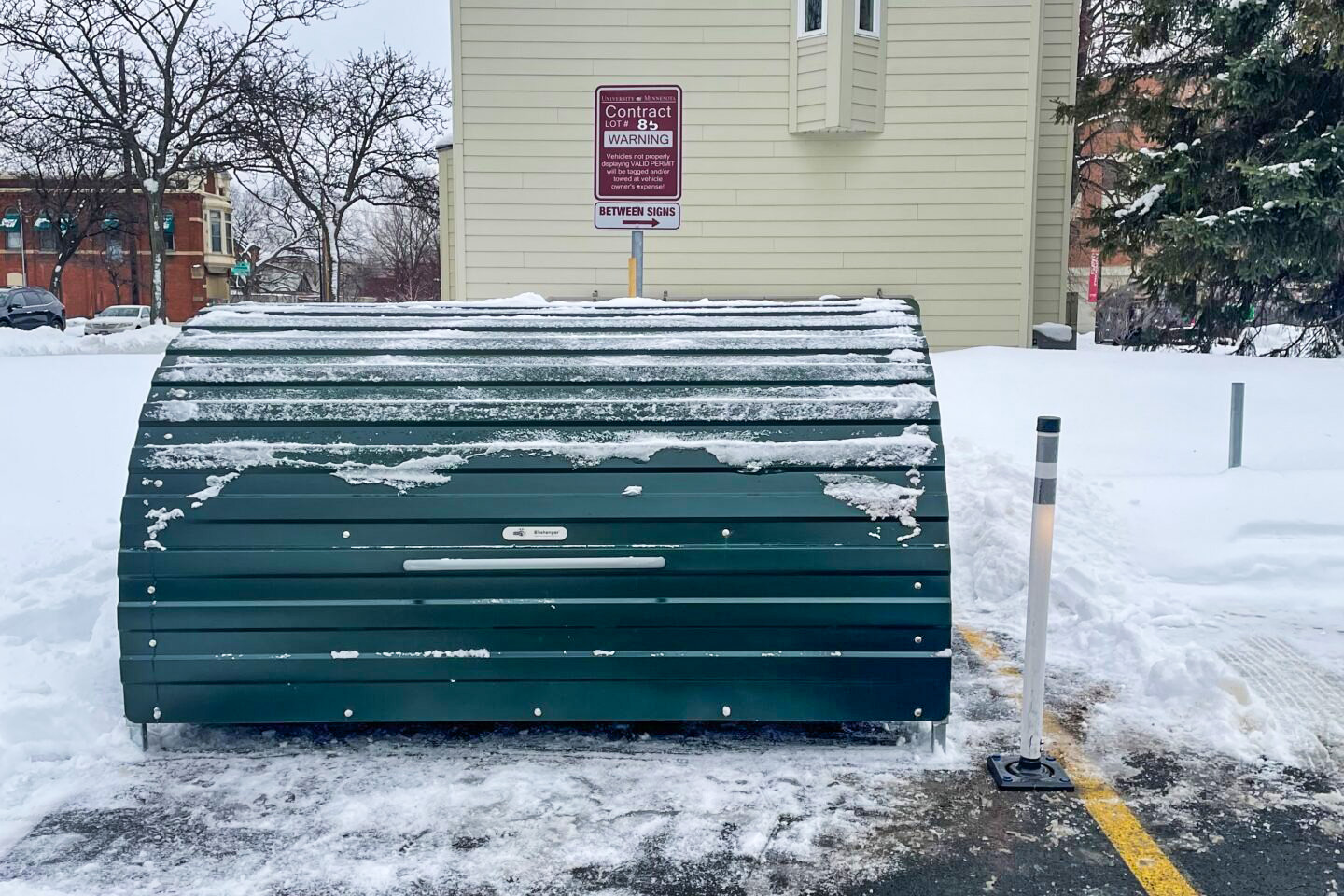Winter in the US can be extreme, with many regions experiencing heavy snowfall, freezing temperatures, and icy conditions.
For those who rely on their bikes for commuting or recreation, it’s essential to ensure that your Bikehangar is well-maintained and prepared to withstand these harsh elements. Our Bikehangars, including their gas springs, have been rigorously tested in some of the coldest climates, like Minneapolis, to ensure they can handle even the most severe winters.
Here’s how to keep your Bikehangar in top condition during the winter months:
Clear Snow Regularly
Heavy snow can accumulate around your Bikehangar, making it difficult to access. Use a plastic shovel or broom to gently clear snow from the roof and sides.
Lubricate Moving Parts
Cold temperatures can stiffen metal components. Regularly lubricate the hinges, locks, and springs with a weather-resistant lubricant such as WD40 or GT85 to keep them functioning smoothly. Also, we’ve found that 2300N springs perform best in harsher winters, and in specific cases (like at the University of Minnesota), we swap out the standard 2000N springs during colder months. Customers can order these “winter” springs from us if they’d prefer this solution over dealing with sagging doors.

Frequently Asked Questions
How do you open a frozen Bikehangar lock?
When the temperature drops below 0°, water can freeze in the lock mechanism, making it difficult to operate. If your key won’t budge, simply follow these steps:
- Spray small amounts of warm water in lock until it works. Hot tap water will do—no need to boil.
- Spray out excess water with compressed air can.
- Insert lock-deicer into lock cylinder and spray, such as WD40 or GT85.
- Alternatively, use automotive de-icer spray or isopropyl alcohol spray in place of warm water and oil.
- Open the Bikehangar as normal and enjoy your ride!
This process can be used on all Bikehangar lock types.
Note: Do not apply excessive heat or an open flame to release the lock, as some lock components are made of plastic and can melt, causing damage.
Why doesn’t my Bikehangar door open as quickly as usual?
During the winter months, you might find that your Bikehangar door is slow to open. This could be because of reduced usage or a lower temperature in the gas springs. If you’re experiencing this, these easy steps could help:
- Clear off any snow from the door, this lessens the weight
- Open and close the door a few times to release and warm the gas springs
- Give the door a little extra push to fully open
In extremely cold conditions, be cautious when exiting the Bikehangar, as the door may droop while in use.
Why won’t my Bikehangar door stay open?
Before entering the Bikehangar, check that the door stays open. If it droops, partially open and close the door a few times to ‘pump’ the gas springs. The door should stay open after a few cycles. Always pay attention to the door while unlocking or locking your bike.
Winter in the US can be tough, but with proper maintenance, your Bikehangar will continue to protect your bike all season long. By following these tips, you’ll ensure that your Bikehangar remains in peak condition, even in the harshest winter climates.
At Cyclehoop, we’re committed to providing the best cycle parking solutions, and we’ve tested our products to ensure they’re up to the challenge. If you have any questions about maintaining your Bikehangar or need further assistance, don’t hesitate to contact us.
Stay warm and keep riding!

 Visit UK
Visit UK
